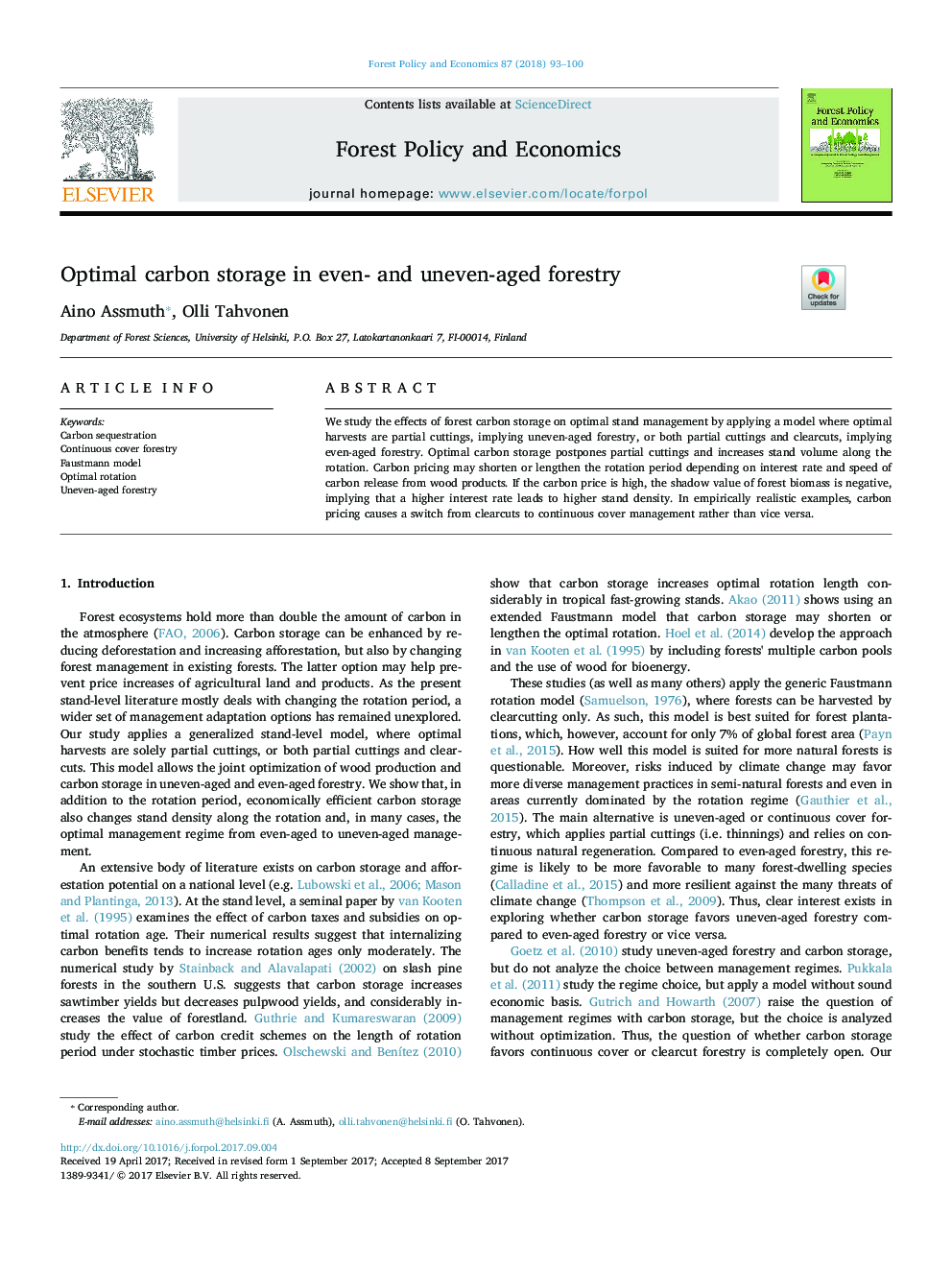| Article ID | Journal | Published Year | Pages | File Type |
|---|---|---|---|---|
| 6544820 | Forest Policy and Economics | 2018 | 8 Pages |
Abstract
We study the effects of forest carbon storage on optimal stand management by applying a model where optimal harvests are partial cuttings, implying uneven-aged forestry, or both partial cuttings and clearcuts, implying even-aged forestry. Optimal carbon storage postpones partial cuttings and increases stand volume along the rotation. Carbon pricing may shorten or lengthen the rotation period depending on interest rate and speed of carbon release from wood products. If the carbon price is high, the shadow value of forest biomass is negative, implying that a higher interest rate leads to higher stand density. In empirically realistic examples, carbon pricing causes a switch from clearcuts to continuous cover management rather than vice versa.
Keywords
Related Topics
Life Sciences
Agricultural and Biological Sciences
Forestry
Authors
Aino Assmuth, Olli Tahvonen,
